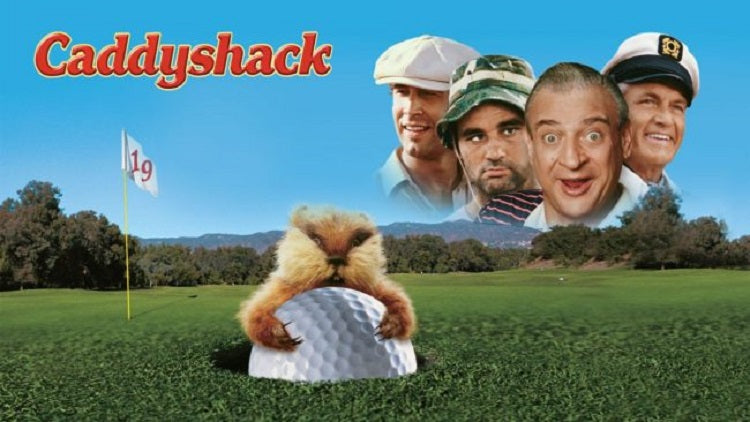At first glance, Harold Ramis’s Caddyshack may seem like a raunchy and funny jaunt through the golf courses of America. After all, that’s what the entire movie revolves around is the golf course and the competitive spirit of the game. But a closer and more analytical look at the movie, specifically its characters, will reveal a commentary of society which may still be considered relevant today.
Take, for instance, Judge Smails. Played by Ted Knight, the judge seems to represent the various levels of the government in Caddyshack. Smails is essentially morally bankrupt and he has the money to prove it. He drives up in a Rolls Royce (how many “on the level” judges can do that) and he still wants more. He gets jealous of Al Czervik, played by Rodney Dangerfield, when he sees that he is even better off financially and well-liked by everybody else on the course. Smails is also jealous of Ty Webb, played by Chevy Chase, because of his success with the ladies and his golf-playing skills. Not only is Smails portrayed as being jealous and greedy, he also cheats at golf and he refuses to honor the bet that he had with Czervik after losing.
Dangerfield’s character – Al Czervik – is as crude and obnoxious as he is rich. He represents the idea of “new money” because he wasn’t always rich. However, he is more generous than the jealous judge. But Czervik doesn’t get off very easy, either. His character is portrayed as a greedy builder who cares nothing about the environment. In fact, the reason the gopher is terrorizing the golf course on which the movie is set is that he was driven away from his home due to Czervik’s condo-building project just a short distance away.
A discussion of Caddyshack characters simply wouldn’t be complete without talking about Carl Spackler, the oddball greenskeeper with all the funny lines played by Bill Murray. Spackler tries throughout the entire movie to catch, maim or even kill the gopher that is tearing up the beautiful greens at Bushwood Golf Course. Spackler seems to have delusions of grandeur as he speaks about being a caddy for the Dalai Lama and he is the “Cinderella story” of the Masters Tournament (a scene which many guys can recite verbatim when given the opportunity to do so). Yet he cannot capture that one little demon that haunts his life – the gopher. In many aspects, the gopher represents the little demon in all of us – that one habit or vice that we simply can’t quench.
Every movie has a lesson or commentary that is not always readily apparent on the surface. Caddyshack is no different. When you watch Caddyshack more than a few dozen times, it’s easy to see a social commentary that the filmmakers were trying to get across. After reading this, you’ll probably never see Caddyshack the same way ever again.

